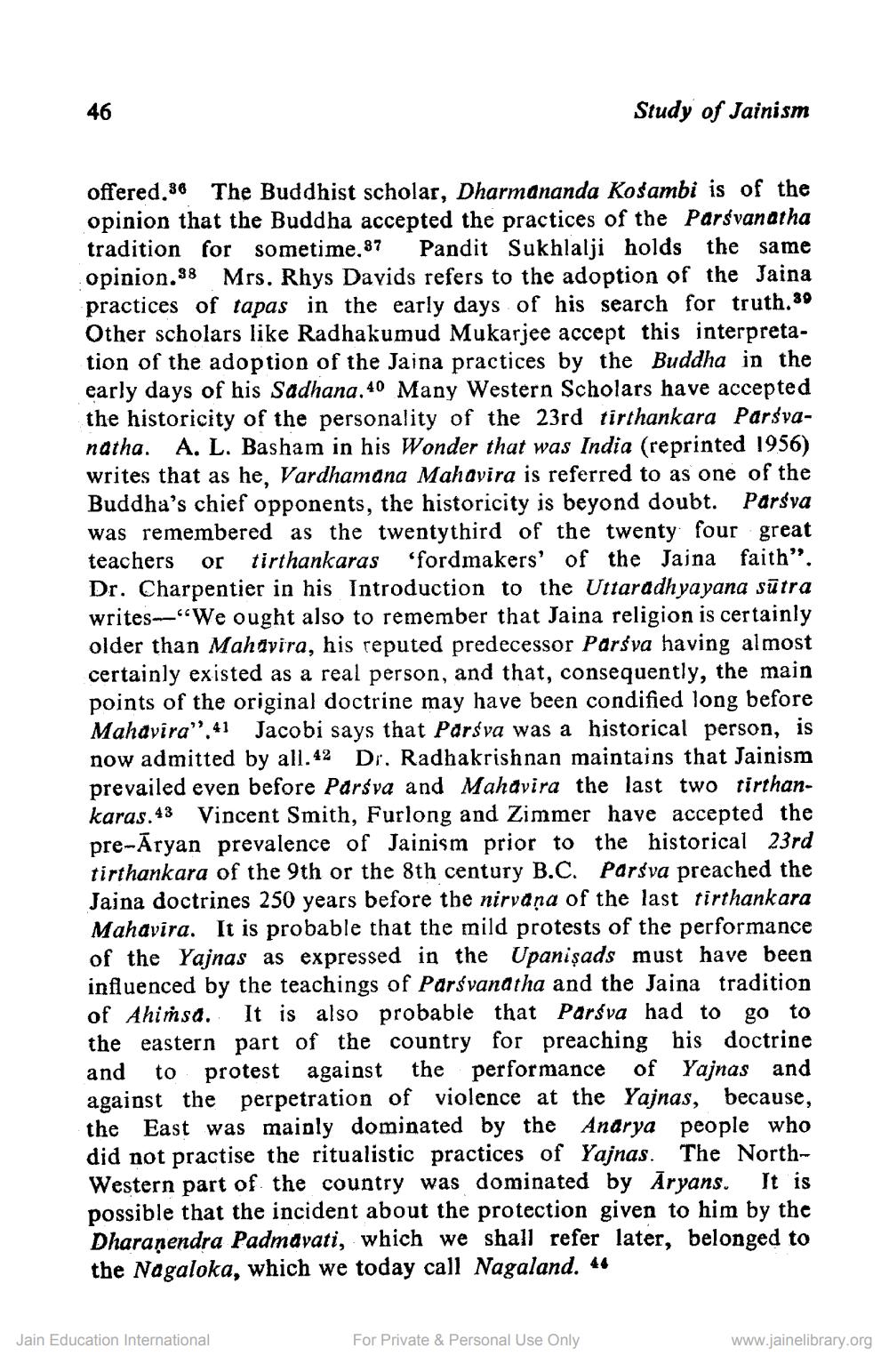________________
46
Study of Jainism
offered.36 The Buddhist scholar, Dharmananda Kosambi is of the opinion that the Buddha accepted the practices of the Parsvanatha tradition for sometime. 87 Pandit Sukhlalji holds the same opinion.38 Mrs. Rhys Davids refers to the adoption of the Jaina
s of tapas in the early days of his search for truth.39 Other scholars like Radhakumud Mukarjee accept this interpretation of the adoption of the Jaina practices by the Buddha in the early days of his Sadhana.40 Many Western Scholars have accepted the historicity of the personality of the 23rd tirthankara Parsvanatha. A. L. Basham in his Wonder that was India (reprinted 1956) writes that as he. Vardhamana Mahavira is referred to as one of the Buddha's chief opponents, the historicity is beyond doubt. Parsva was remembered as the twentythird of the twenty four great teachers or tirthankaras 'fordmakers' of the Jaina faith”. Dr. Charpentier in his Introduction to the Uttaradhyayana sūtra writes-“We ought also to remember that Jaina religion is certainly older than Mahayira, his reputed predecessor Parsva having almost certainly existed as a real person, and that, consequently, the main points of the original doctrine may have been condified long before Mahavira”.41 Jacobi says that Parsva was a historical person, is now admitted by all.42 Dr. Radhakrishnan maintains that Jainism prevailed even before Parsva and Mahavira the last two tirthankaras. 43 Vincent Smith, Furlong and Zimmer have accepted the pre-Aryan prevalence of Jainism prior to the historical 23rd tirthankara of the 9th or the 8th century B.C. Parsva preached the Jaina doctrines 250 years before the nirvana of the last tirthankara Mahavira. It is probable that the mild protests of the performance of the Yajnas as expressed in the Upanişads must have been influenced by the teachings of Parsvanatha and the Jaina tradition of Ahimsa. It is also probable that Parsva had to go to the eastern part of the country for preaching his doctrine and to protest against the performance of Yajnas and against the perpetration of violence at the Yajnas, because, the East was mainly dominated by the Anarya people who did not practise the ritualistic practices of Yajnas. The NorthWestern part of the country was dominated by Aryans. It is possible that the incident about the protection given to him by the Dharanendra Padmavati, which we shall refer later, belonged to the Nagaloka, which we today call Nagaland. 46
Jain Education International
For Private & Personal Use Only
www.jainelibrary.org




